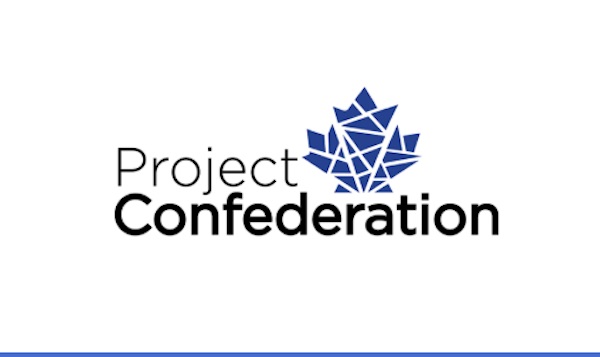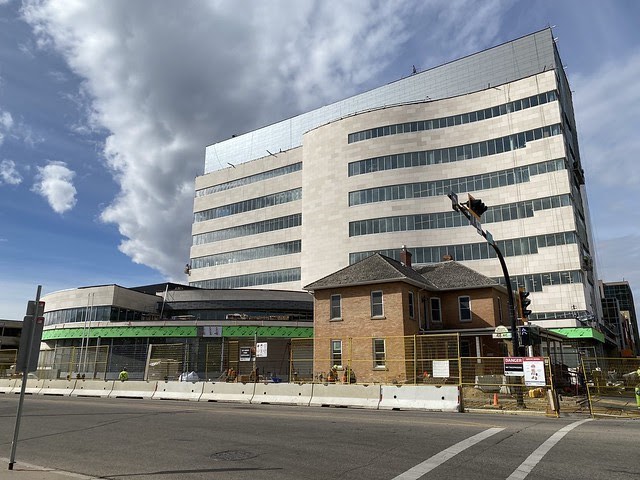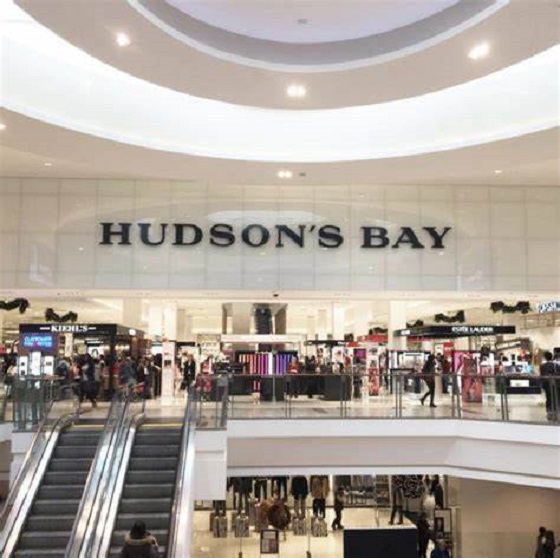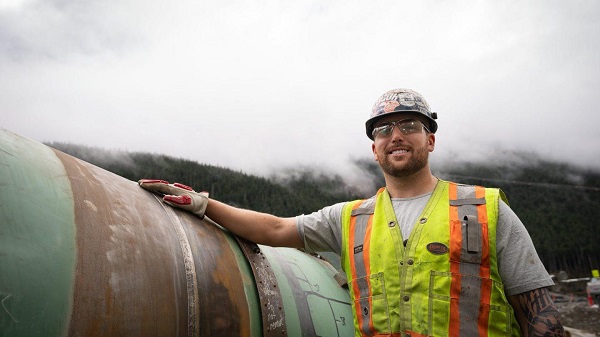Alberta
Alberta NDP have their own Just Transition plan – Project Confederation

From Josh Andrus, Executive Director of Project Confederation
Look what we discovered about the “Just Transition”…
You might remember, not so long ago, that federal Natural Resources Minister, Jonathan Wilkinson, announced that the federal Liberal government would soon be rolling out its plan for a “Just Transition.”
This is the “Just Transition” plan that the federal NDP insisted be included in the “confidence and supply agreement” that is currently propping up Justin Trudeau’s minority government.
Then, an internal government memo was made public, suggesting that hundreds of thousands of jobs will be lost in this “transition” – particularly in western Canada.
Project Confederation immediately sprung to action, investigating the proposed policies and launching a petition against the plan, which has now received more than 13,000 signatures.
(If you haven’t signed the petition yet, you can do so here)
As news spread, Alberta Premier Danielle Smith, and Saskatchewan Premier Scott Moe spoke out strongly against the plan.
But one politician was suspiciously quiet – the Alberta NDP leader, Rachel Notley.
We thought Albertans, and Canadians, deserved to know whether someone running to be Premier of Alberta supported the shutting down of Alberta and western Canada’s largest industry.
And so we pushed hard for Rachel Notley to answer the question – does she support the “Just Transition” idea?
But, as time went on, Notley’s silence became more and more deafening.
Eventually, her silence became so deafening that even some in the media began to question whether or not she truly disagreed with the plan.
Hours turned into days, and days turned into weeks – literally!
Two full weeks after Wilkinson’s announcement, Rachel Notley finally broke her silence, calling on Ottawa to “put the brakes on” the “Just Transition”.
But, “put the brakes on” sounded a lot more like “wait until after the Alberta election” than “ditch it entirely” to us.
So we decided to do some more digging.
Well, after some excellent work by our research team, we think we now know why it took so long for Rachel Notley to oppose the “Just Transition.”
It turns out that, rather than just being some federal NDP idea that she’s now distanced her provincial party from, the “Just Transition” was actually a huge part of her NDP government’s plans.
Insert flashback music here.
It’s November 2015, the newly minted NDP government are celebrating a big election win, and are moving forward with their climate change strategy.
(You know, the one they accidentally forgot to mention that they were going to implement if they won).
New Alberta Minister of Environment and Parks, Shannon Phillips, commissions a blue-ribbon report by a team of high-profile academics, to help the NDP figure out exactly how to fulfil their campaign promise (sorry, their campaign omission).
Several months later, the “Climate Leadership Report” is released, setting out the government’s vision for climate policy and – guess what?
The “Just Transition” is a key part of the NDP’s Climate Leadership Report!
Yep, that’s right – forget not knowing what the “Just Transition” is, and claiming not to support the federal government’s plan.
In reality, it was Rachel Notley’s government who wrote the policy in the first place, and then made it a critical part of their entire environmental policy agenda.
Here are some extracts from the report…
In a section discussing mitigating the impacts of carbon pricing on low- and middle-income Albertans, the NDP said they would “support a sound and just transition for labour and communities…”

Later in the report, the authors highlight a quote from their friends at the Alberta Federation of Labour.
This quote is really just one gigantic contradiction, given the government is literally legislating their employment out of existence:

Next, the report talks about what the workers who lose their jobs might need to do as part of this “transition” – it notes that they may need assistance with “relocation”:

Oh, sorry, did the government legislate away your job?
Not to worry, we’ll “fix” it for you by helping you walk away from your entire life and move somewhere else.
Remember how Rachel Notley said Albertans might have to move to BC to find work while she was Premier?
Yeah, we’d prefer Albertans could find work here in Alberta, thanks.
*****
Here’s the thing…
Not only did the Alberta NDP support the concept of a federal “Just Transition” when they were in government, they were also actively implementing their own “Just Transition” – 8 years earlier than the federal government!
And yet now they claim to not support the idea at all?
No wonder it took so long for Rachel Notley to answer the question.
She was probably just surprised that no one in the media had dug up her own support of “Just Transition” legislation from years before, and was wondering if she could get away with pretending she hadn’t.
Well, we’re not surprised no one in the media bothered looking.
But, we did look, and thank goodness we did!
Thank you to our researchers who dug up this document, which I’m sure the NDP would have preferred we’d not found.
If you’d like to help us do even more research like this, please click here to make a donation to our work.
Otherwise, if you haven’t signed the No Unjust Transition petition yet, please click here to do so now.
Rachel Notley’s claim to now be opposed to the exact thing that she herself implemented is not credible.
She can run from it, but she can’t hide.
Her environmental policies put Alberta into one of its deepest recessions ever.
And we can’t afford to repeat those mistakes.
Sincerely,
Josh Andrus
Executive Director
Project Confederation
Alberta
Red Deer Justice Centre Grand Opening: Building access to justice for Albertans

The new Red Deer Justice Centre will help Albertans resolve their legal matters faster.
Albertans deserve to have access to a fair, accessible and transparent justice system. Modernizing Alberta’s courthouse infrastructure will help make sure Alberta’s justice system runs efficiently and meets the needs of the province’s growing population.
Alberta’s government has invested $191 million to build the new Red Deer Justice Centre, increasing the number of courtrooms from eight to 12, allowing more cases to be heard at one time.
“Modern, accessible courthouses and streamlined services not only strengthen our justice
system – they build safer, stronger communities across the province. Investing in the new Red Deer Justice Centre is vital to helping our justice system operate more efficiently, and will give people in Red Deer and across central Alberta better access to justice.”

Government of Alberta and Judiciary representatives with special guests at the Red Deer Justice Centre plaque unveiling event April 22, 2025.
On March 3, all court services in Red Deer began operating out of the new justice centre. The new justice centre has 12 courtrooms fully built and equipped with video-conference equipment to allow witnesses to attend remotely if they cannot travel, and vulnerable witnesses to testify from outside the courtroom.
The new justice centre also has spaces for people taking alternative approaches to the traditional courtroom trial process, with the three new suites for judicial dispute resolution services, a specific suite for other dispute resolution services, such as family mediation and civil mediation, and a new Indigenous courtroom with dedicated venting for smudging purposes.
“We are very excited about this new courthouse for central Alberta. Investing in the places where people seek justice shows respect for the rights of all Albertans. The Red Deer Justice Centre fills a significant infrastructure need for this rapidly growing part of the province. It is also an important symbol of the rule of law, meaning that none of us are above the law, and there is an independent judiciary to decide disputes. This is essential for a healthy functioning democracy.”
“Public safety and access to justice go hand in hand. With this investment in the new Red Deer Justice Centre, Alberta’s government is ensuring that communities are safer, legal matters are resolved more efficiently and all Albertans get the support they need.”
“This state-of-the-art facility will serve the people of Red Deer and surrounding communities for generations. Our team at Infrastructure is incredibly proud of the work done to plan, design and build this project. I want to thank everyone, at all levels, who helped make this project a reality.”
Budget 2025 is meeting the challenge faced by Alberta with continued investments in education and health, lower taxes for families and a focus on the economy.

Quick facts
- The new Red Deer Justice Centre is 312,000 sq ft (29,000 m2). (The old courthouse is 98,780 sq ft (9,177 m2)).
- The approved project funding for the Red Deer Justice Centre is about $191 million.
Alberta
Made in Alberta! Province makes it easier to support local products with Buy Local program

Show your Alberta side. Buy Local. |
When the going gets tough, Albertans stick together. That’s why Alberta’s government is launching a new campaign to benefit hard-working Albertans.
Global uncertainty is threatening the livelihoods of hard-working Alberta farmers, ranchers, processors and their families. The ‘Buy Local’ campaign, recently launched by Alberta’s government, encourages consumers to eat, drink and buy local to show our unified support for the province’s agriculture and food industry.
The government’s ‘Buy Local’ campaign encourages consumers to buy products from Alberta’s hard-working farmers, ranchers and food processors that produce safe, nutritious food for Albertans, Canadians and the world.
“It’s time to let these hard-working Albertans know we have their back. Now, more than ever, we need to shop local and buy made-in-Alberta products. The next time you are grocery shopping or go out for dinner or a drink with your friends or family, support local to demonstrate your Alberta pride. We are pleased tariffs don’t impact the ag industry right now and will keep advocating for our ag industry.”
Alberta’s government supports consumer choice. We are providing tools to help folks easily identify Alberta- and Canadian-made foods and products. Choosing local products keeps Albertans’ hard-earned dollars in our province. Whether it is farm-fresh vegetables, potatoes, honey, craft beer, frozen food or our world-renowned beef, Alberta has an abundance of fresh foods produced right on our doorstep.
Quick facts
- This summer, Albertans can support local at more than 150 farmers’ markets across the province and meet the folks who make, bake and grow our food.
- In March 2023, the Alberta government launched the ‘Made in Alberta’ voluntary food and beverage labelling program to support local agriculture and food sectors.
- Through direct connections with processors, the program has created the momentum to continue expanding consumer awareness about the ‘Made in Alberta’ label to help shoppers quickly identify foods and beverages produced in our province.
- Made in Alberta product catalogue website
Related information
-

 Business1 day ago
Business1 day agoTrump: China’s tariffs to “come down substantially” after negotiations with Xi
-

 Business1 day ago
Business1 day agoTrump considers $5K bonus for moms to increase birthrate
-

 Business2 days ago
Business2 days agoHudson’s Bay Bid Raises Red Flags Over Foreign Influence
-

 2025 Federal Election2 days ago
2025 Federal Election2 days agoMark Carney Wants You to Forget He Clearly Opposes the Development and Export of Canada’s Natural Resources
-

 2025 Federal Election2 days ago
2025 Federal Election2 days agoCanada’s pipeline builders ready to get to work
-

 Business20 hours ago
Business20 hours agoChinese firm unveils palm-based biometric ID payments, sparking fresh privacy concerns
-

 2025 Federal Election1 day ago
2025 Federal Election1 day agoCanada’s press tries to turn the gender debate into a non-issue, pretend it’s not happening
-

 International2 days ago
International2 days agoNew York Times publishes chilling new justification for assisted suicide





